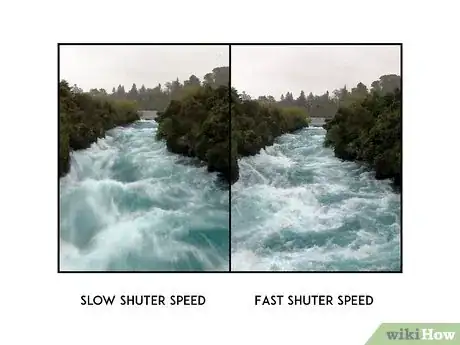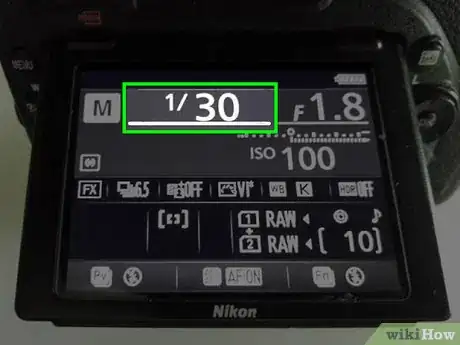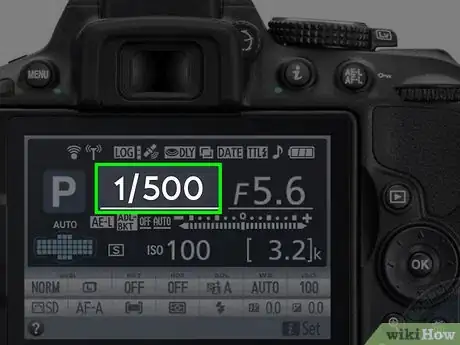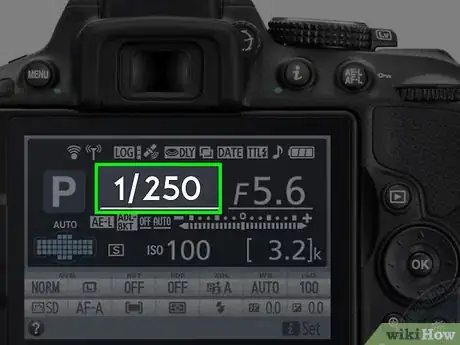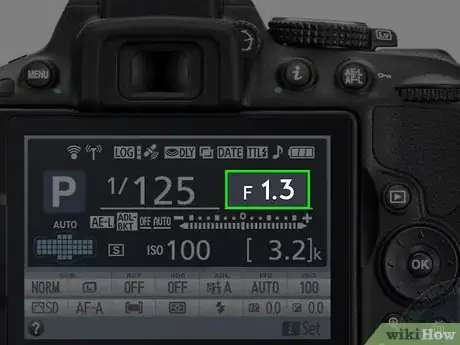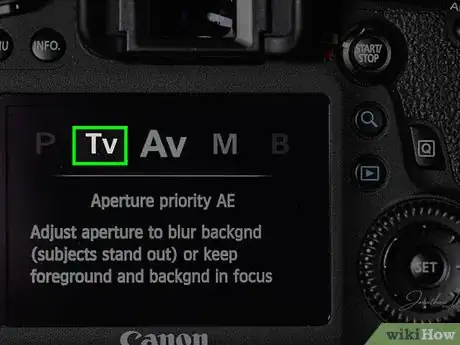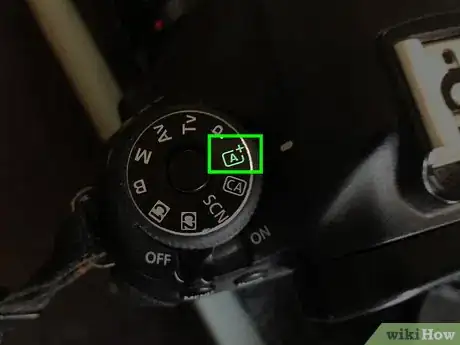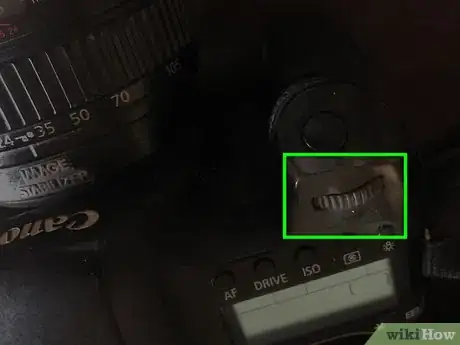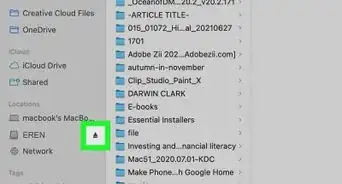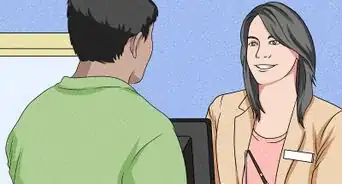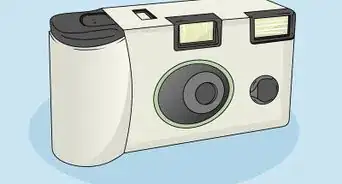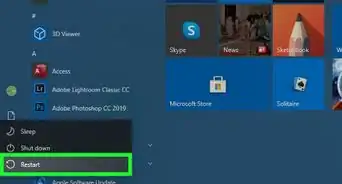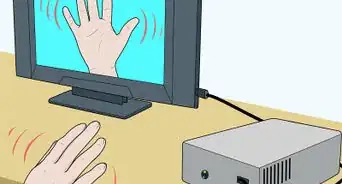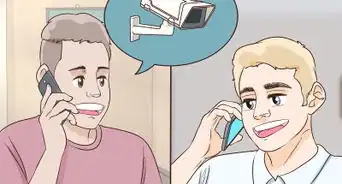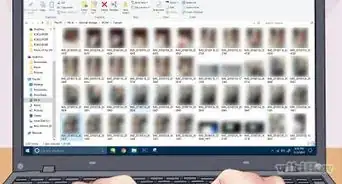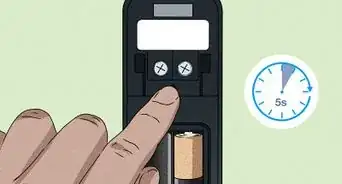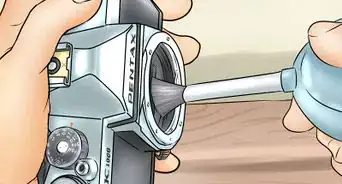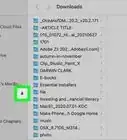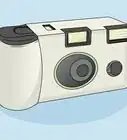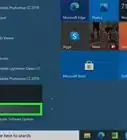This article was co-authored by Cory Ryan. Cory Ryan is a Professional Wedding Photographer who runs Cory Ryan Photography based in Austin, Texas. She has over 15 years of photography experience and specializes in weddings and events. Her work has been featured in publications such as The Knot, Style Me Pretty, and Junebug Weddings. She received a BA in Media Production and Broadcast Journalism from the University of North Carolina - Chapel Hill.
There are 8 references cited in this article, which can be found at the bottom of the page.
This article has been viewed 18,480 times.
The shutter speed is one of the most basic and fundamental things that goes into taking a great photograph. If the shutter is open for longer, the image sensor will be exposed to light for longer. With a short shutter speed, the image sensor will be exposed to light for less time. Changing the shutter speed by one notch faster or one notch slower is called adjusting it by one “step.” When you raise the shutter speed by one step you’re halving the amount of time that the shutter is open for, and when you lower the shutter speed by one step you’re doubling the amount of time that the shutter is open for.
Steps
Selecting a Shutter Speed
-
1Use a fast shutter speed in bright shooting conditions. It’s important to adjust the shutter speed to accommodate the light you’re shooting in. Use a shutter speed faster than 1/250 of a second (e.g., 1/500 or 1/1,000) if you’re shooting in bright, natural light. This will adequately expose the image without overwhelming the image sensor with light. A longer exposure time will overexpose the photograph and leave it washed out.[1]
- Shutter speeds are indicated as fractions of a second. For example, your shutter speed could be 1/125, 1/600, or 1/200. Some cameras will leave out the numerator, and just give the bottom half of the fraction. In this case, you’d be dealing with shutter speeds of 125, 600, or 200.
- The phrase “exposure time” just refers to the amount of time that the shutter is open. It’s open for a longer period of time for a longer exposure and less time for a shorter exposure.
-
2Opt for a longer shutter speed in dim shooting conditions. If you’re shooting indoors or in the evening, use a longer shutter speed. Even if you’re shooting indoors during daylight hours, try a shutter speed of 1/30 of a second or longer (e.g., 1/20 or 1/10 of a second). A longer speed will ensure that enough light to properly expose the photograph hits the image sensor.[2]
- Anytime you adjust your camera’s shutter speed, use the built-in light sensor to see if you’ll be exposing the image sensor to enough light.
Advertisement -
3Choose shutter speeds longer than one second in low-light situations. Photographers very rarely use extremely slow speeds like one, two, or thirty seconds. Only use these speeds if you’re shooting in very low light. For example, if you’re shooting photos of the moon at night, you might need to leave the shutter open for 10–30 seconds.[3]
- Anytime you have the shutter open for longer than 1/30 of a second, you are going to see some camera shake in the image, since people’s hands cannot hold a camera perfectly still. So, set the camera up on a tripod if you’re using a slow shutter speed.
-
4Select a shutter speed faster than 1/500 for motion capture. If you’re capturing a group of people jumping up in the air or taking photos of your friend skateboarding, choose a fast shutter speed to freeze the motion in a still image. This will give the photograph a crisp appearance and capture the exact position of the photo’s subject in the moment that you snapped the picture. If you find that 1/500 is a little too slow, try using 1/1,000 or 1/2,000.[4]
- When shooting with a fast shutter speed, you typically don’t need to use a tripod. Although everybody’s hands have a very slight natural shake when holding a camera, the shutter won’t be open for long enough to register this slight shaking.
-
5Try a shutter speed longer than 1/250 to give your photo an artistic blur. If you’re shooting, say, a field of flowers or a friend running along a beach, you might want to let the photo’s subject blur slightly to give the image a sense of motion and energy. Shooting with a slightly longer shutter speed will capture a little of the subject’s motion while the shutter is open. If the camera doesn’t capture enough blur when you’re shooting at 1/250, try a longer exposure time like 1/100.[5]
- Make sure that you’re using a tripod when you shoot images that capture motion. If you hold the camera by hand, the background of the shot will also blur as your hands shake slightly. This will give the photo an overall blurry look.
-
6Match your shutter speed with your ISO and aperture setting. Your camera’s aperture setting (also known as the f-stop) determines how wide the small hole is that lets light onto the image sensor and is an important component when trying to properly expose a photograph. Use your camera’s light sensor to figure settings that will lead to a good exposure of your image.[6]
- The ISO number refers to the film speed that your camera is set to imitate. Lower ISO numbers (e.g., 200 or 400) require more light to expose properly while higher ISO numbers (e.g., 800 or 1,600) require relatively little light.
- For example, if you’re shooting 800 ISO film (or have your digital single-lens reflux [DSLR] set to 800 ISO), using an aperture of f/2 (wide) and a shutter speed of 1/500 (fast) will allow in roughly the same amount of light as shooting with an aperture of f/11 (narrow) and a shutter speed of 1/15 (slow).
-
7Shoot with a wide aperture and a short shutter speed for a short depth of field. In photography, depth of field refers to how much of the depth of the image is in focus. A “long” depth of field means that the background is in focus, while a “short” depth of field means that only the foreground is focused. Having a short depth of field is ideal for pictures that show only the subject and blur out the background.[7]
- For example, use an aperture of f/2 and a shutter speed of 1/1,000 to blur out the background and leave only the subject in focus.
- Conversely, if you want a long depth of field, use a small aperture and a long shutter speed. This will render the entire image—foreground and background—in focus. This is a popular option for landscape photos.
Setting the Shutter Speed
-
1Put your camera in “Tv” mode if you’d rather not select the f-stop. Your camera should have a 1 inch (2.5 cm) wide selection dial on the top-right side that allows you to select how much control you have over the camera’s exposure settings. If you use “Tv” (time value) mode (also known as shutter priority mode), you’ll select the shutter speed and the camera will automatically choose a corresponding f-stop.[8]
- This is a good selection if you’re a less experienced photographer or don’t have time to match the f-stop to the shutter speed (e.g., if you’re shooting an action shot).
- If you’re shooting in Tv mode and choose a shutter speed that’s too fast or slow for the lighting conditions, the f-stop will blink or present an error sign to indicate that you can’t use that shutter speed.[9]
- The terms “aperture” and “f-stop” are used interchangeably; they both refer to the same thing.
-
2Use “manual” mode if you want full control over the exposure. If you twist the selection dial to the “M” (manual) mode, you’ll be able to manually select both the shutter speed and the f-stop. This is a good option to use if you want to fiddle with the shot’s depth of field and if you have plenty of time to set up the shot (e.g., if you’re shooting a static subject).[10]
- Older DSLRs and film single-lens reflux (SLR) cameras may only have a fully manual and a fully automatic mode. In this case, select the fully manual mode to have control over the shutter speed.
-
3Find the default shutter speed on the camera’s image display. Once you’ve selected your shooting mode, take a look at the digital screen on the back of the camera. It should display the shutter speed that the camera is currently set to. In most cases, this will be the default shutter speed.[11]
- For example, many DSLRs have a default shutter speed of 1/320.
-
4Click the dial on the top-right of the camera to adjust the shutter speed. Most models of DSLR have a small, upward-facing dial on the top-right side of the camera, right next to the shutter button. Move the dial one click to the right to slow down the shutter speed by one stop and one click to the left to speed up the shutter speed by one stop.[12]
- If you’re shooting in Tv mode, the camera will select the f-stop that will best expose your image with the shutter speed you’ve chosen.
Expert Q&A
Did you know you can get expert answers for this article?
Unlock expert answers by supporting wikiHow
-
QuestionWhat should shutter speed be set at?
 Cory RyanCory Ryan is a Professional Wedding Photographer who runs Cory Ryan Photography based in Austin, Texas. She has over 15 years of photography experience and specializes in weddings and events. Her work has been featured in publications such as The Knot, Style Me Pretty, and Junebug Weddings. She received a BA in Media Production and Broadcast Journalism from the University of North Carolina - Chapel Hill.
Cory RyanCory Ryan is a Professional Wedding Photographer who runs Cory Ryan Photography based in Austin, Texas. She has over 15 years of photography experience and specializes in weddings and events. Her work has been featured in publications such as The Knot, Style Me Pretty, and Junebug Weddings. She received a BA in Media Production and Broadcast Journalism from the University of North Carolina - Chapel Hill.
Professional Wedding Photographer
References
- ↑ https://www.lightroompresets.com/blogs/pretty-presets-blog/17989804-7-days-to-mastering-manual-mode-what-is-shutter-speed
- ↑ https://www.lightroompresets.com/blogs/pretty-presets-blog/17989804-7-days-to-mastering-manual-mode-what-is-shutter-speed
- ↑ https://digital-photography-school.com/shutter-speed/
- ↑ https://digital-photography-school.com/shutter-speed/
- ↑ https://www.lightroompresets.com/blogs/pretty-presets-blog/17989804-7-days-to-mastering-manual-mode-what-is-shutter-speed
- ↑ https://digital-photography-school.com/shutter-speed/
- ↑ https://digital-photography-school.com/aperture/
- ↑ https://youtu.be/mTKXY-zRsPM?t=14
- ↑ https://youtu.be/mTKXY-zRsPM?t=63
